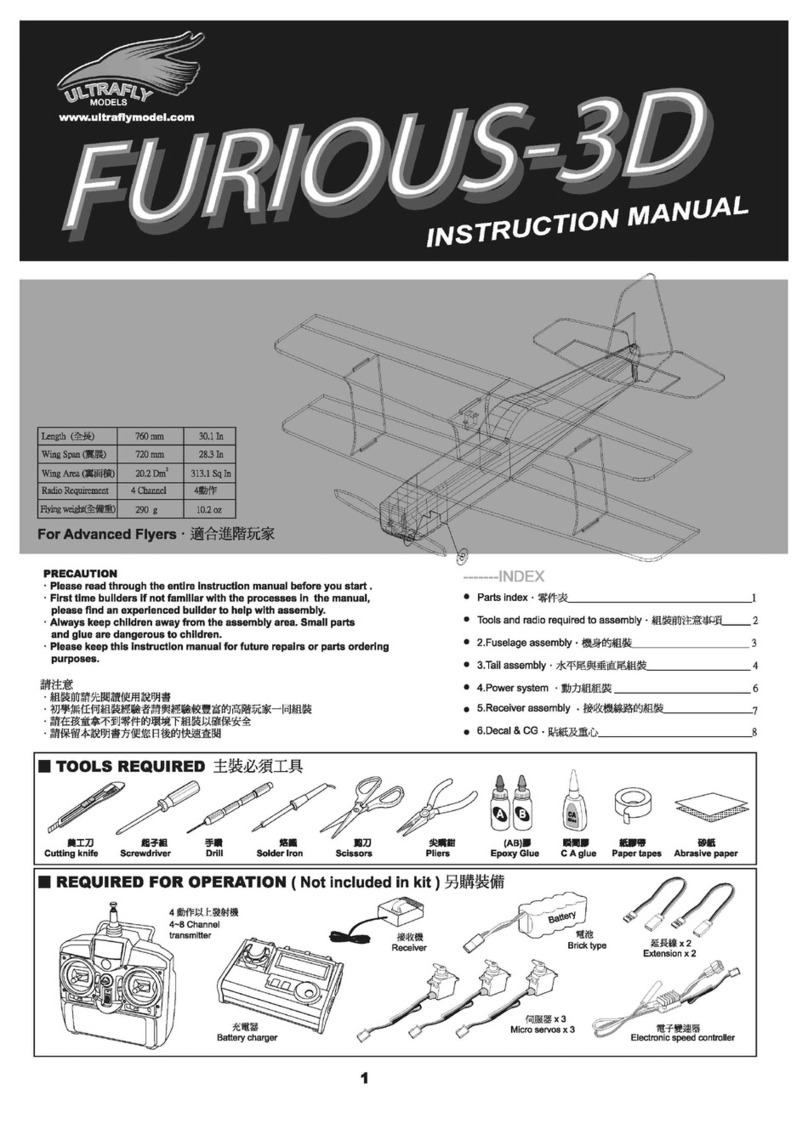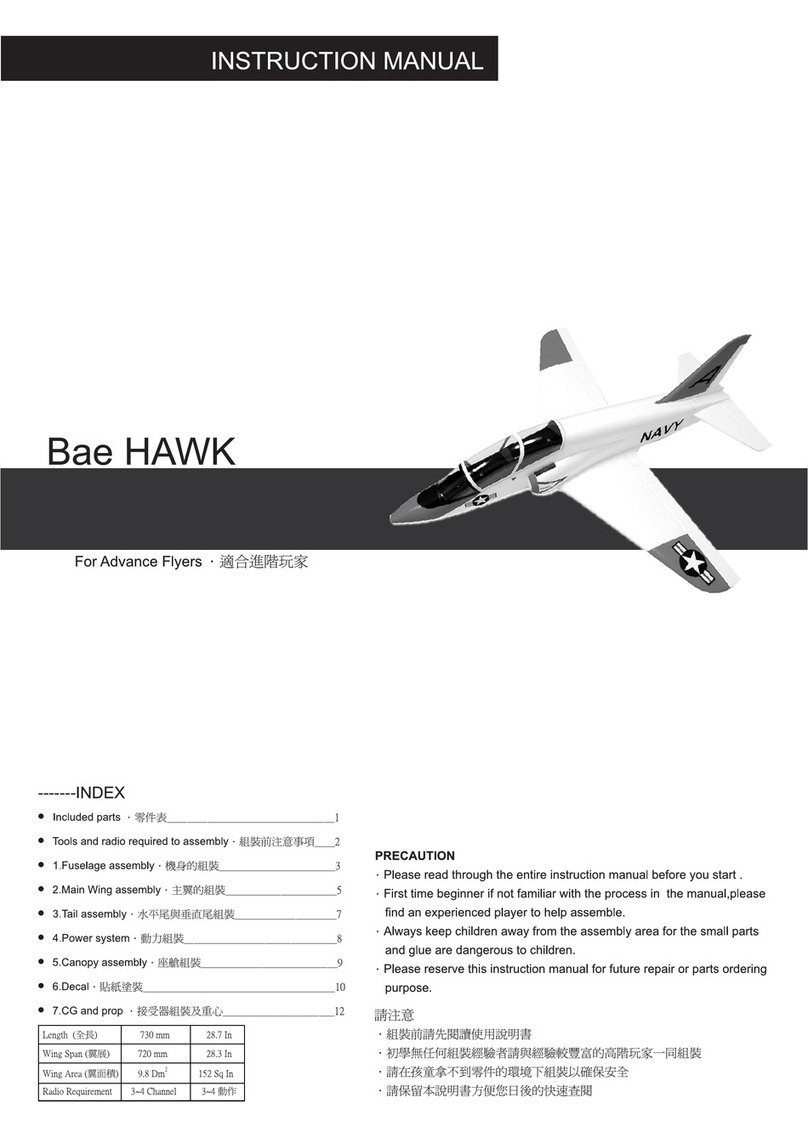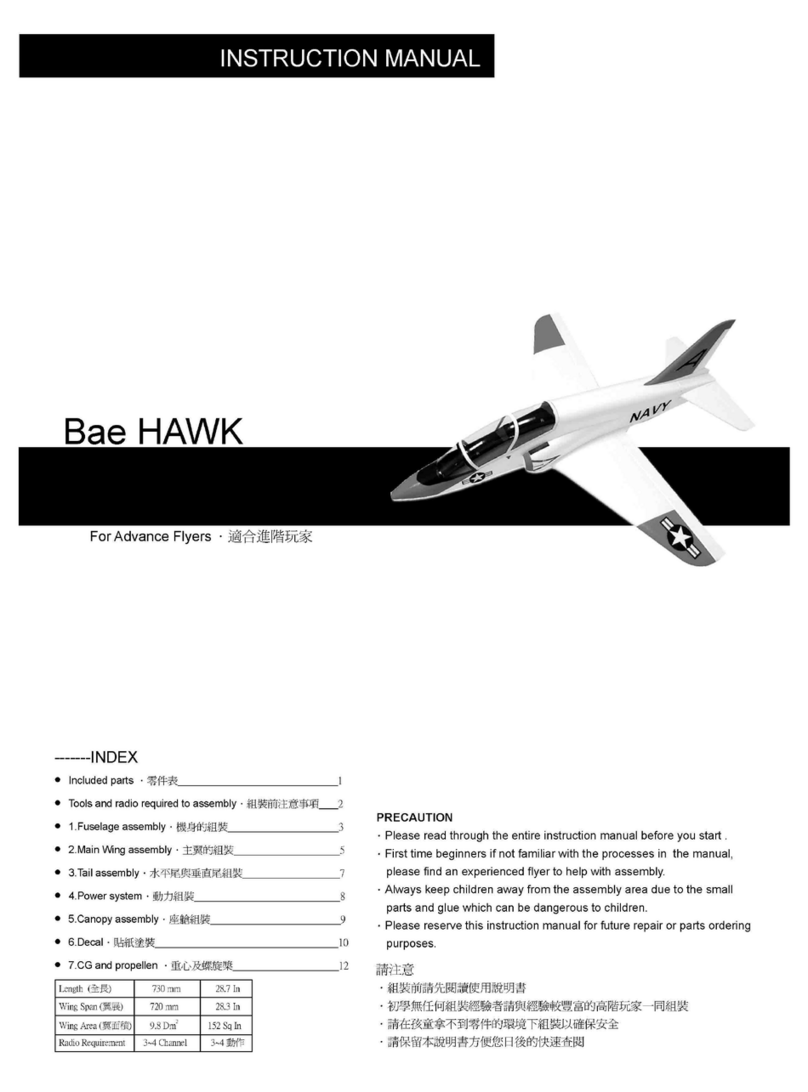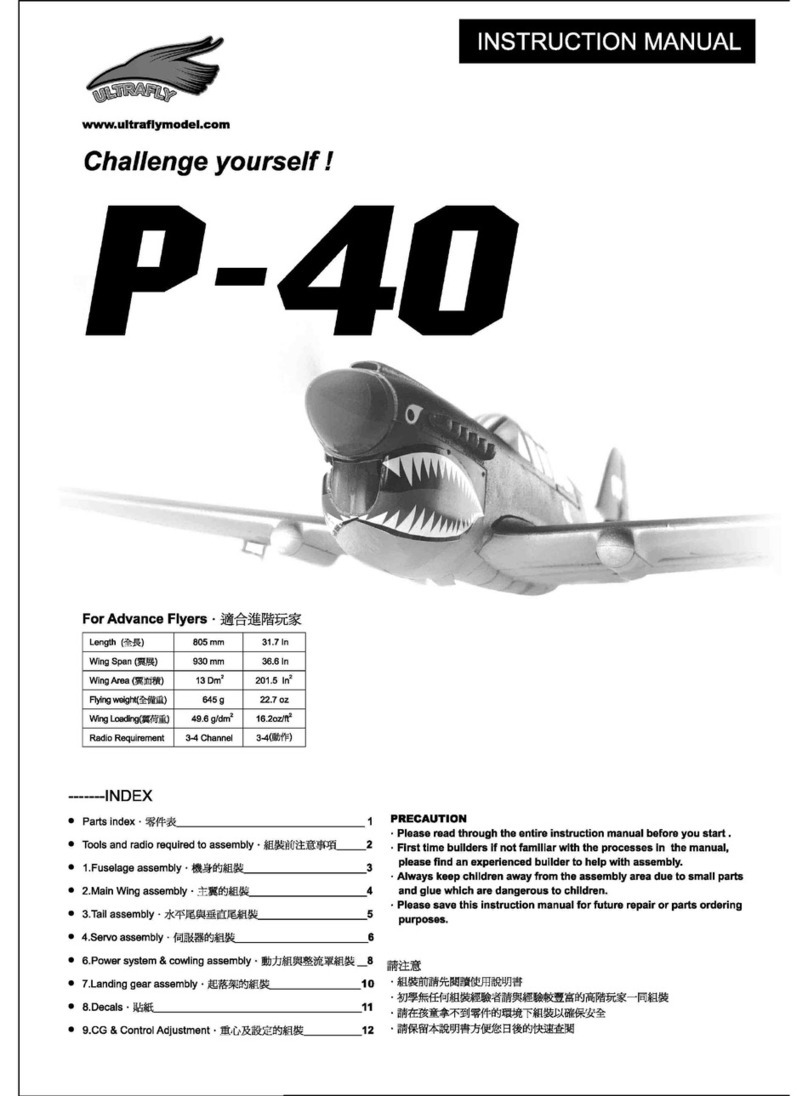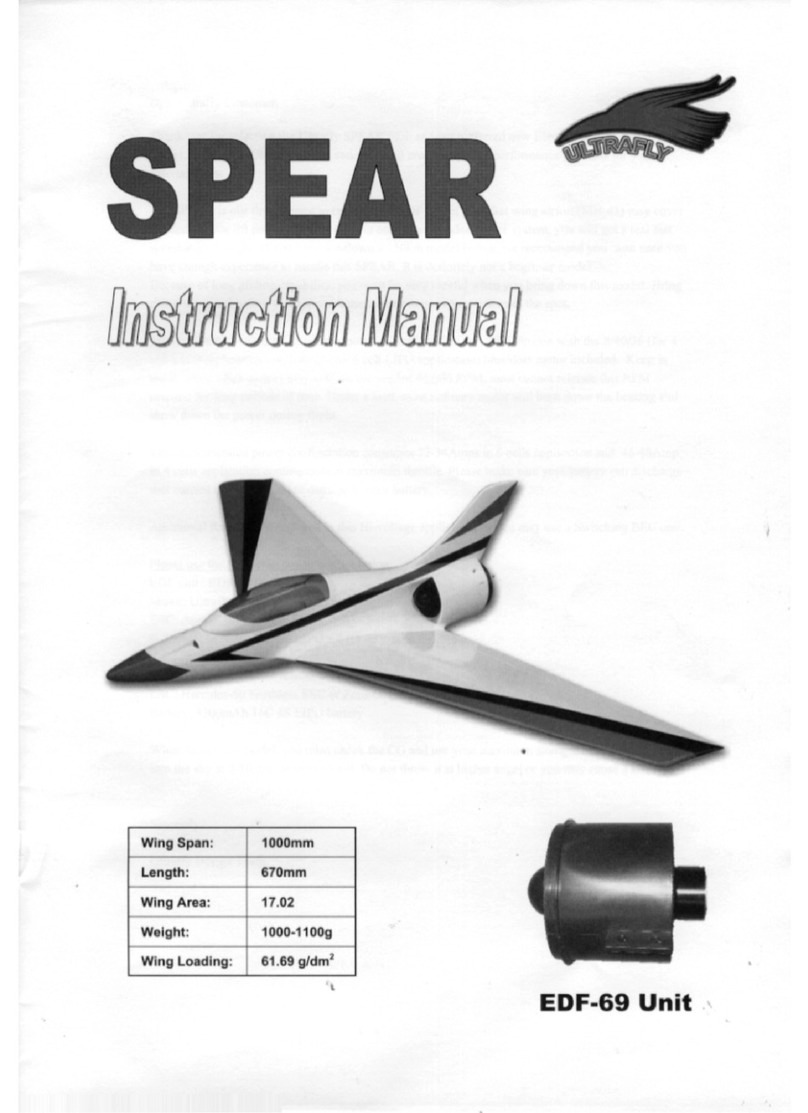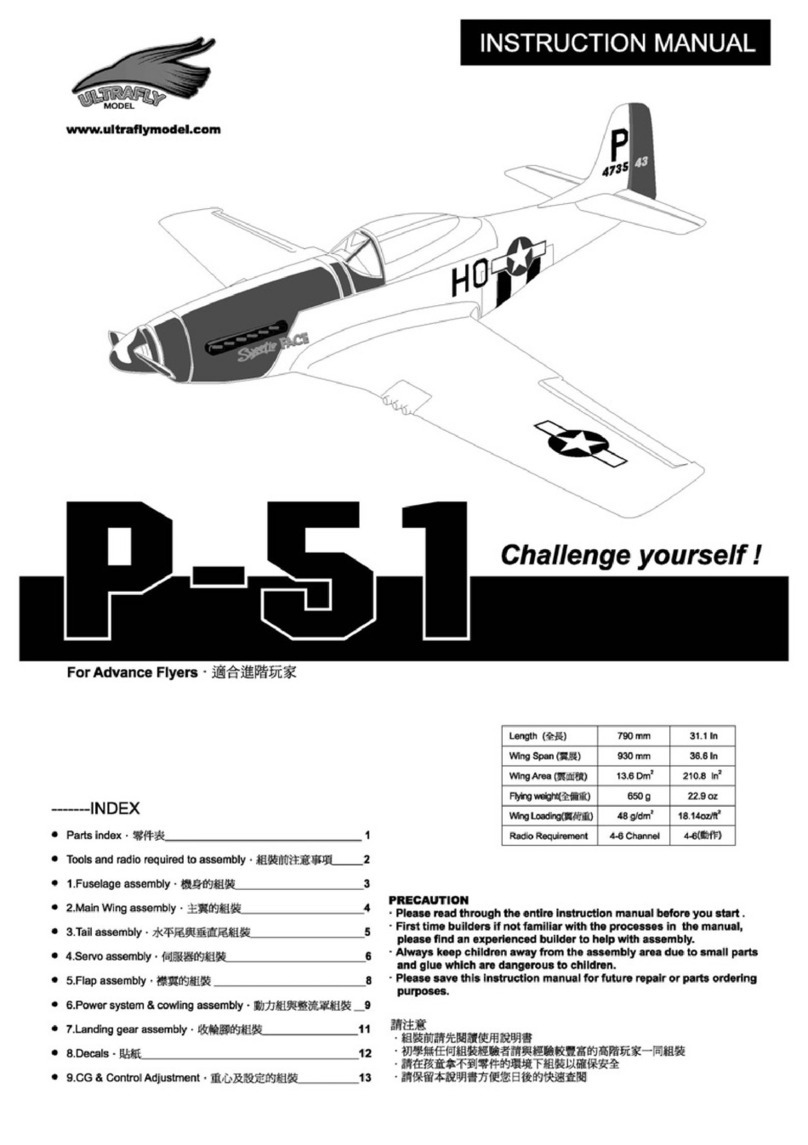
Dearcustomer,
Wethank
you
for
your
selectiononthisBeginnermodel.This
"Tutor
32E"
isdesignedtoflylikeaglow
engine
Trainermodel.Our
intentionis
to
replacethe
old
glow
enginetrainermarket.Withtheelectric
power
model,beginner
pilots
don't
havetoworryaboutengineshotdownandtuning
issues
any
more.Thefast
assemblydesignalso
helpsthebeginner
pilot
to
get
intothis
Hobby
easier
thanusual.Thelargerwing
spanand
winresistantairfoilallowsthe
pilot
tofly/practice
inwindysituationeasierthan
allthesmallsize
foam
models.Byintroducingthismodel,wewishto
helpmore
dealers
toembracethenewbeginner
pilots
witheasel
lf
you
don'tliketoflyslow,bychangingthe
propeller
to
a10x7E,thismodelbecomesveryaggressive.You
willdiscoveralotfunwith
thisnew
power
and
newflying
performance.
ltisamodelforfunaswell!
Wewouldliketoexplorefurtheronthespecialfeatures
for
our
target
pilots:
This
1.44m
trainer
modelisthelightestone
(AUW:
1.5k9)inmarketat
its
size.
Thelightweight
contributes
toitslightwing-loadingwhichallowsittoflyatlowerspeedand
give
the
pilot
moreresponsetimeinthe
air.
Thestall
speed
isalsomuchslowerthanthetraditional
glow
engine
trainer.Eveninstall
situation,
the
reactionis
gentle
and
predictable!
Thespecialdesignedairfoil
allowsittopenetrate
winwithease
regardlessitlightweight.
Allthe
above
featuresmake
"Tutor
32E"
the
perfect
choiceforallbeginners!
Forthebeginner
pilots,
werecommend
you
to
join
thelocalclubandaskedhelpfromtheclub
member/instructoron
guidingyou
throughtheassemblysequence.Afterthat
helping
you
trim/tuneupthe
modelandlead
you
in
your
firstflight.lfyou
can
notfindsuchinstructor,
please
tryaskinghelp
from
the
store
youpurchased
themodel.Theyusuallycanhelp
you
byexplaining
the
assembly
sequenceandthe
necessary
glue
andtools
you
wouldneedtofinishthebuilt.Somemayeven
introducethelocal
club
to
you.
lfyou
can
not
get
anyhelp,
please
readthroughthismanualbefore
you
startthebuildandfollowallthe
steps
expressineachchapter.
Weaskedthedealertospendalittle
timerecommendingthis
modelandexplaininghowsimplethe
assembly
process
canbe.All
necessary
toolsand
glue
should
be
purchased
inthestore!Most
importantly,
explaintheeffect
ofallcontrolsurfaceonthismodel.ltwouldhelpthe
pilot
understandinghowtosetup
and
trimthemodel.
Sincerely
yours,
Ultrafly
ModelTeam
